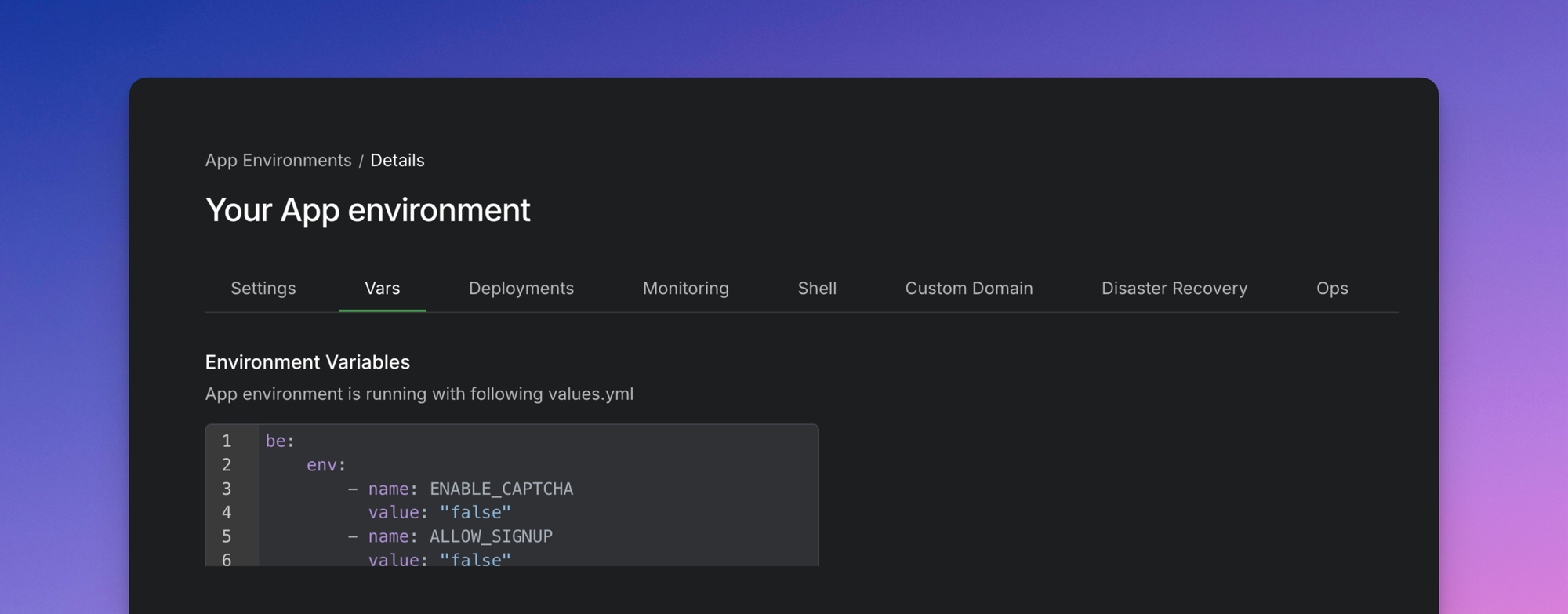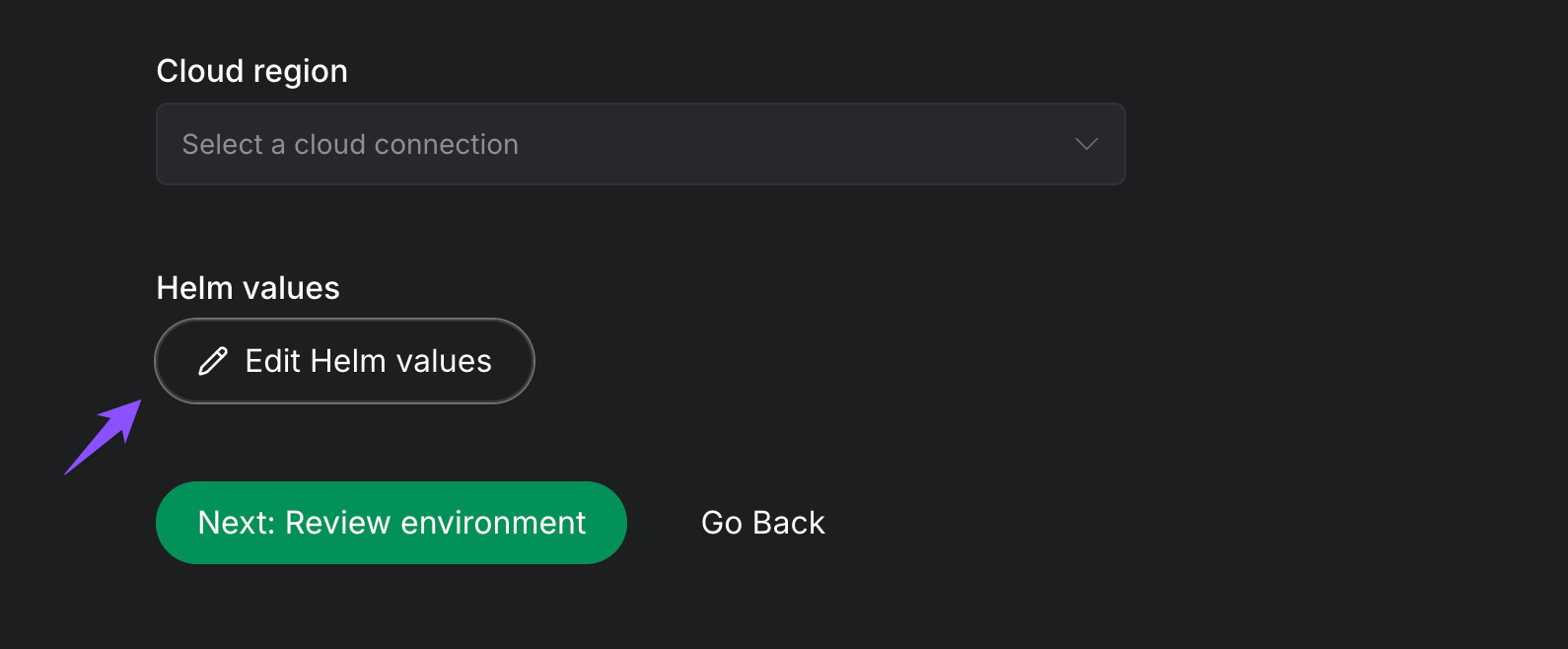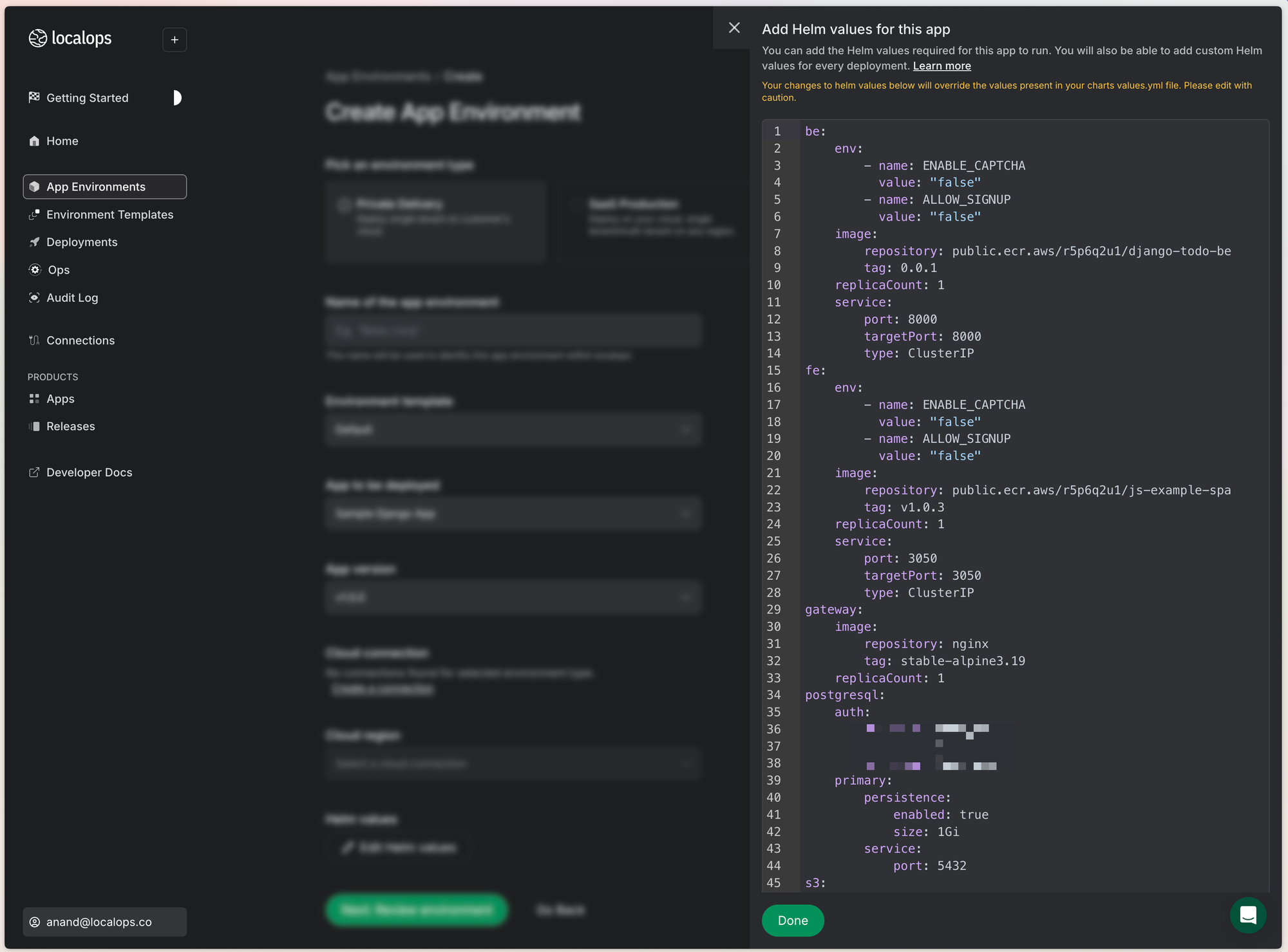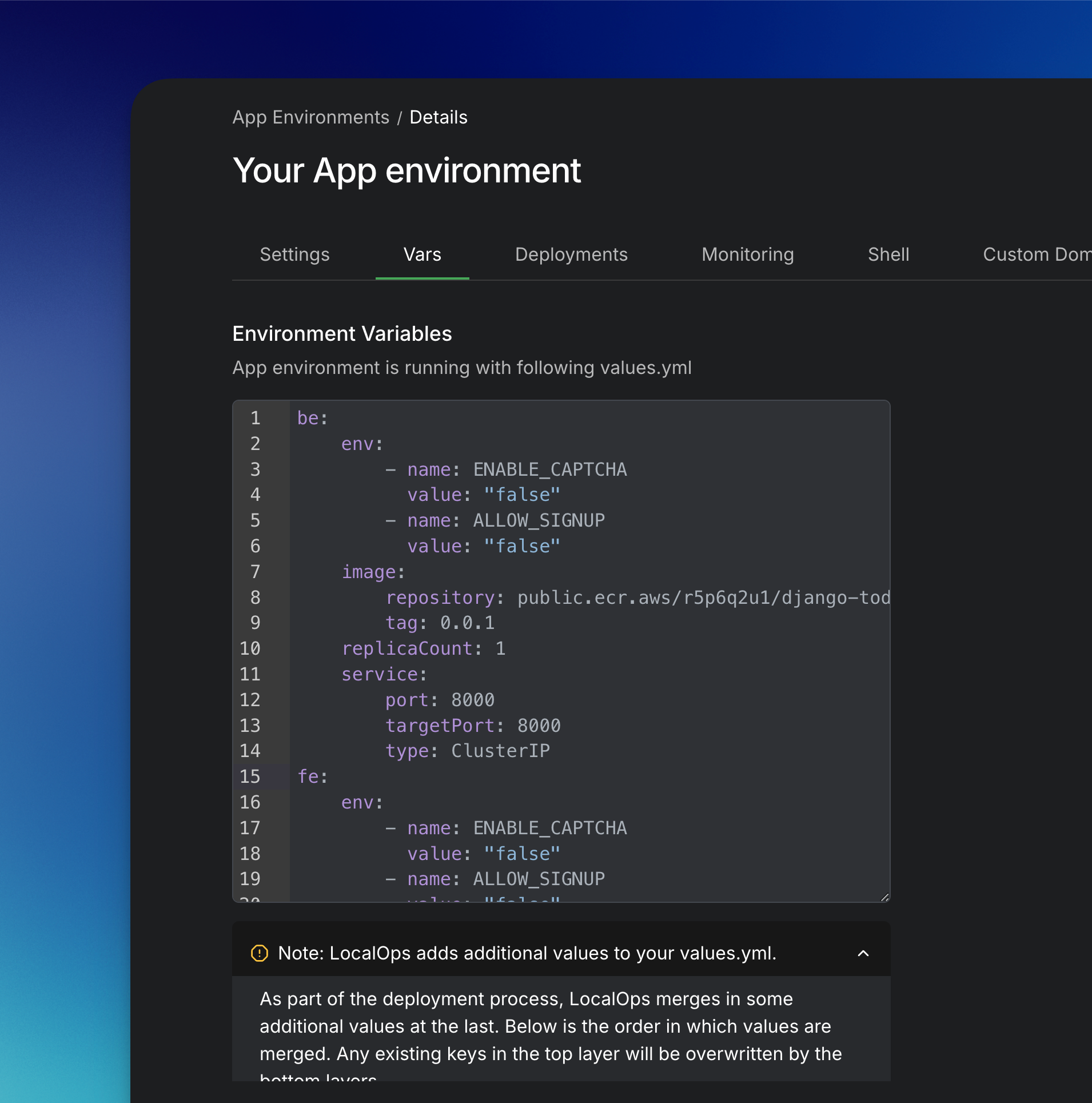
What's new on Oct 22? - Environment Vars
If you are building SaaS / Web app today, chances are that are you are following "one codebase many deploys" guideline from 12factor.net.
You will need to set "environment variables" to be able to customise how a specific environment (staging/test/production) behaves at run time. We have now made this process way easier within LocalOps.
🎉 When you create a brand new App Environment in your cloud or your customer cloud, you will be able to add/update environment variables from inside LocalOps dashboard.
How it works?
LocalOps currently handles apps as Kubernetes apps / Helm charts since each App environment is run by a Kubernetes cluster.
When manually installing an app as "Helm Chart" in a Kubernetes cluster, you will set environments variables in a yaml file and pass them during installation like:
$ helm install <Release name> <Repo url / Chart name> -f <location of values.yaml>LocalOps follows the above same step within its automated process, when installing applications within the kubernetes cluster that is backing your app environment.
The values provided within this yaml file will be available to the chart's components to use at deploy time to get later passed as environment vars in your containers/pods/deployments.
You will now see a friendly yaml editor within the LocalOps dashboard to draft a new `values.yaml` yaml file. You will see "Edit Helm values" button during the following workflows:
- New app environment
- New deployment


If the Helm Chart of your app has its own values.yaml inside, the yaml provided within the LocalOps dashboard will override those values.

WYSIWIG: Given that there is overriding aspect in this workflow, we have pre-filled the yaml editor with the contents of original values.yaml that is found inside your Helm chart. So that you will always see & update the final version of values.yml that will get applied during Helm chart installation/update process and not worry about any overriding process.
Vars tab:
You will now see a new Vars tab in App environments, to see current values.yaml that is being used. You can edit any value there, via a new deployment!

Docs:
Checkout our documentation on docs.localops.co to learn how to handle environment vars: https://docs.localops.co/bring-your-app/environment-vars/your-vars
Get Started:
LocalOps can provision production-ready 12-factor-app compatible app environments in your cloud or your customer cloud within minutes and not weeks.
All app environments come with pre-configured open source logging, monitoring, alerting, disaster recovery and other tools so that you & your team don't have to put in the time to decide, install and configure them on all your environments. Time saved is money saved!
Sign up now. Our free plan lets you provision & manage up to 3 app environments for free in your cloud. Checkout https://localops.co/.
If you need a personalised demo? Schedule a 30-min slot at https://on.localops.co/meetings/anand-localops/30-min-demo.
Cheers ✌️.


